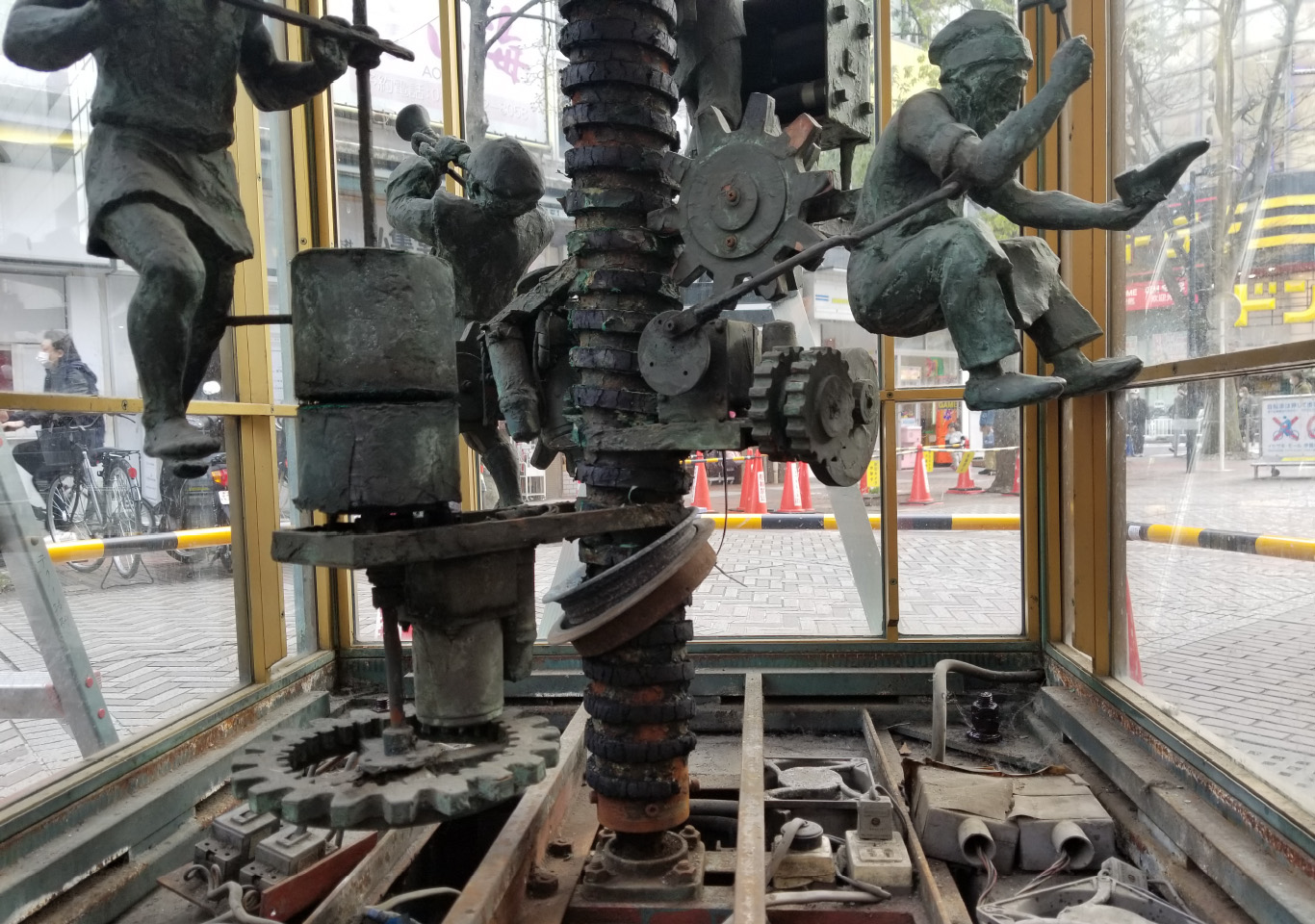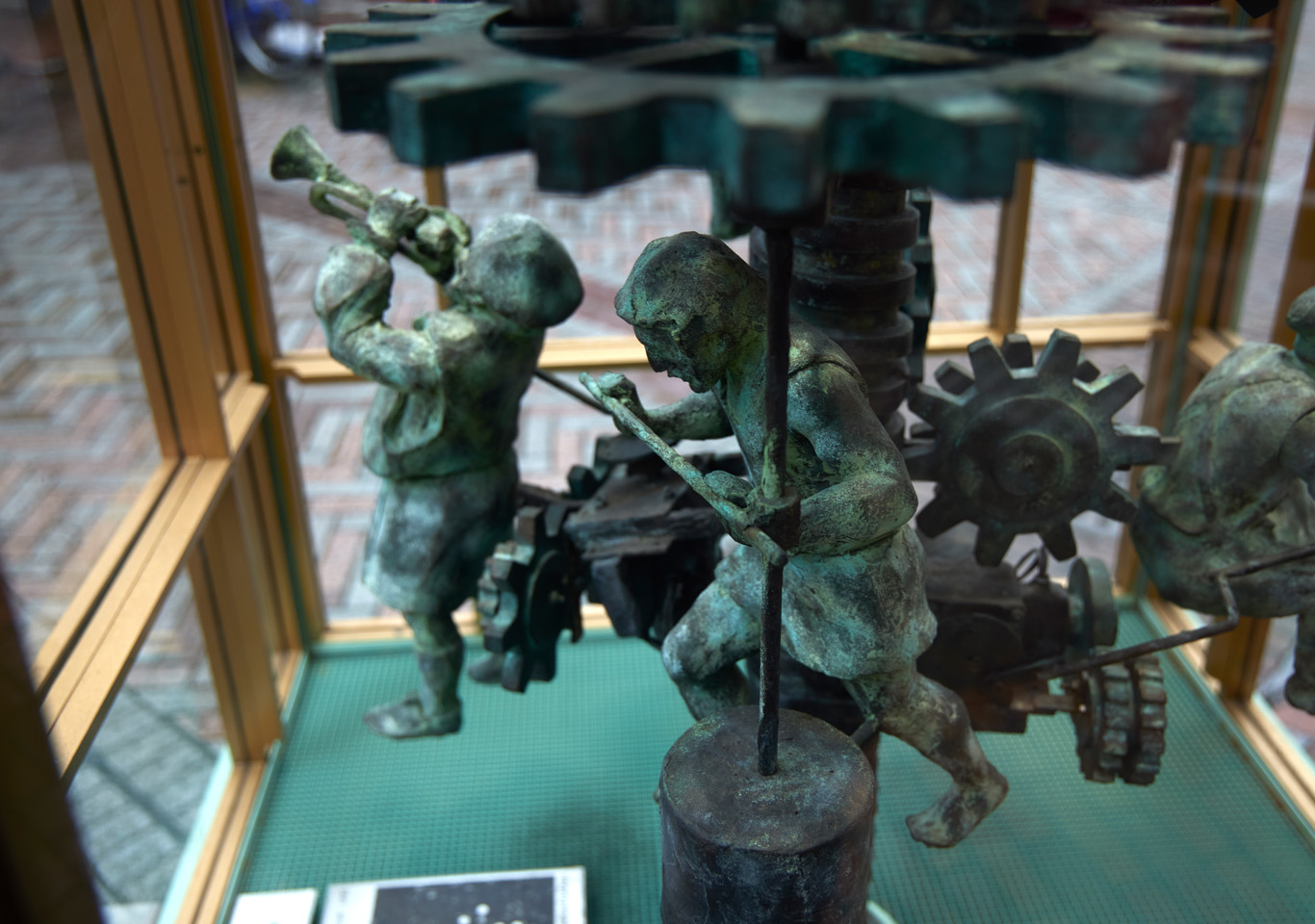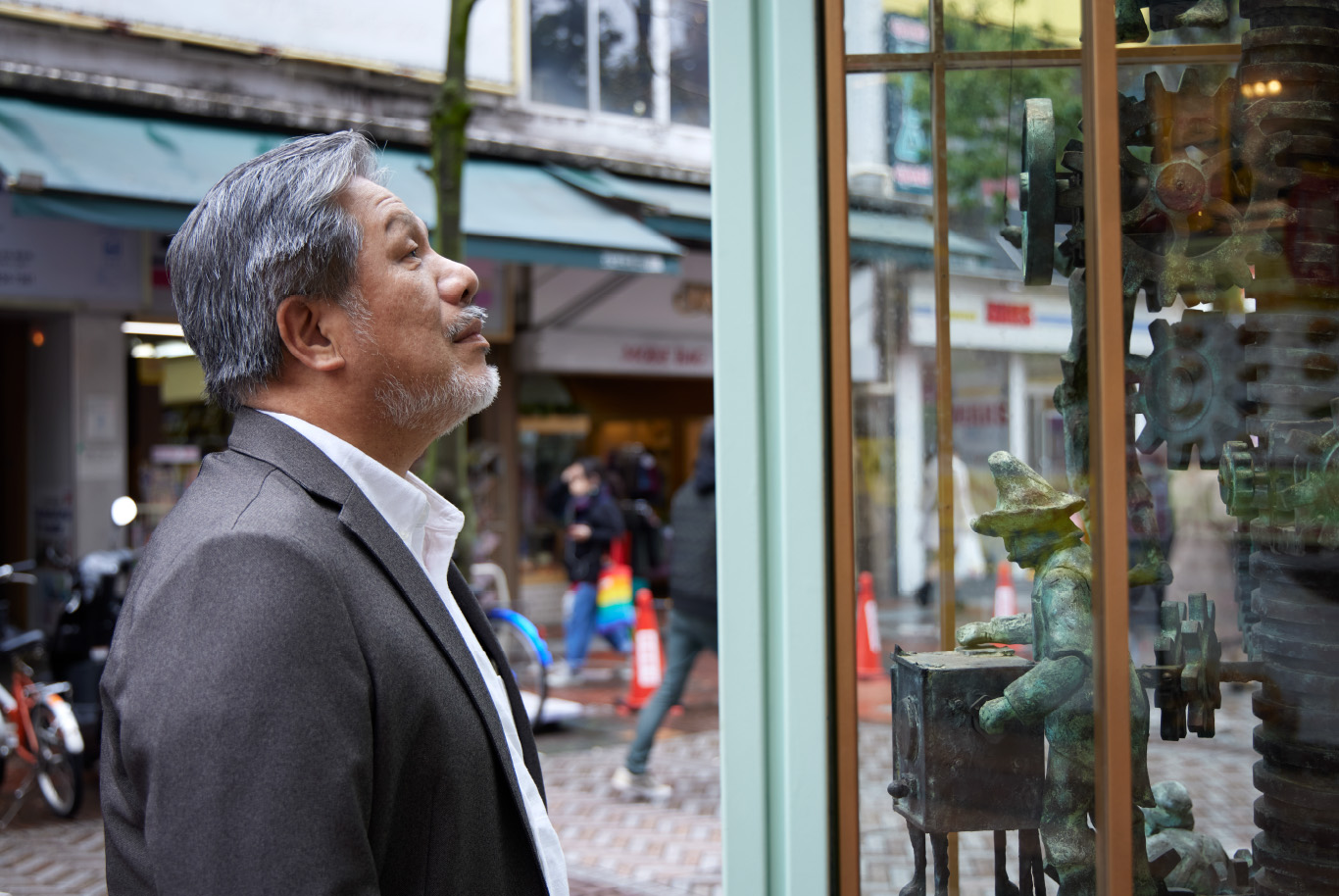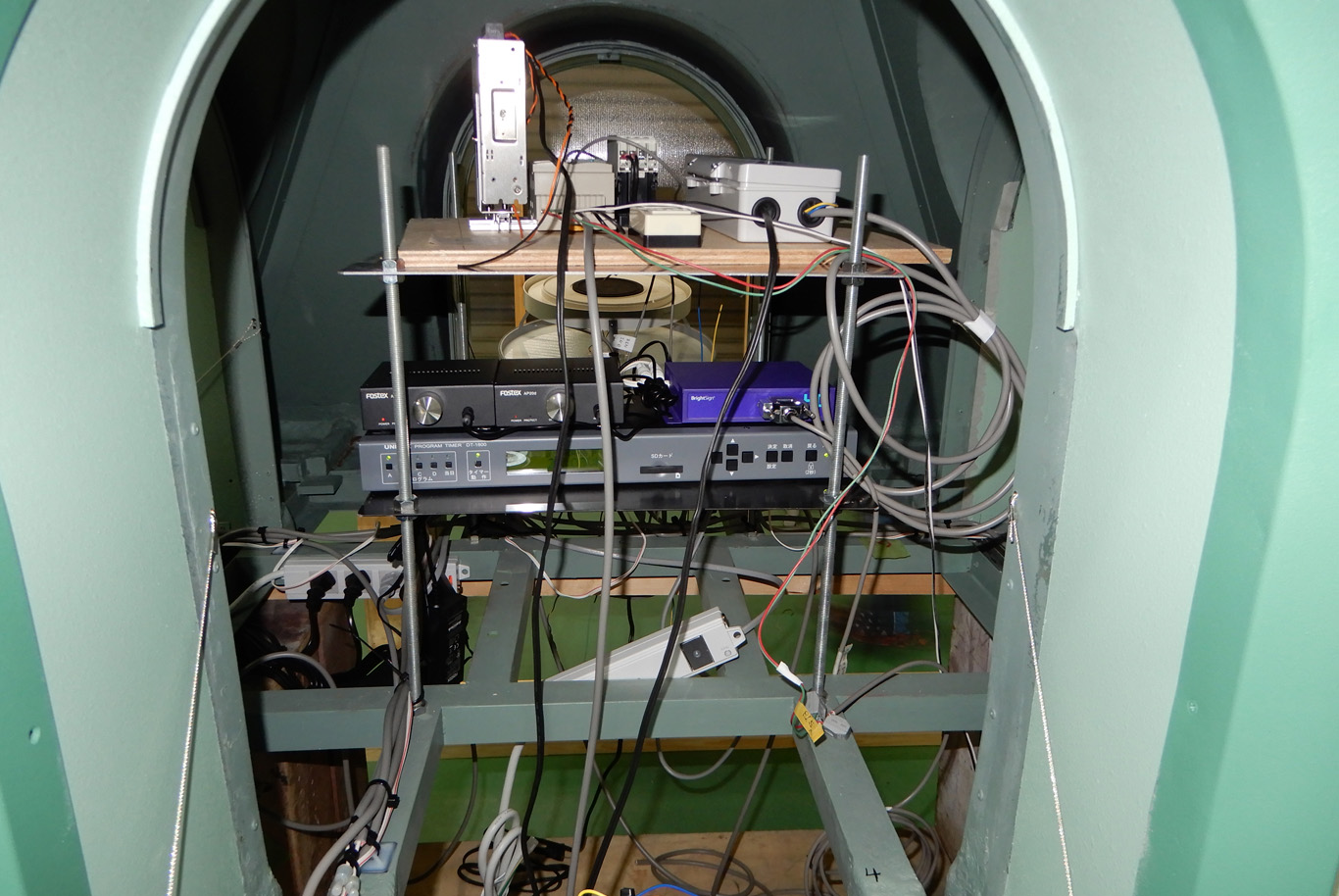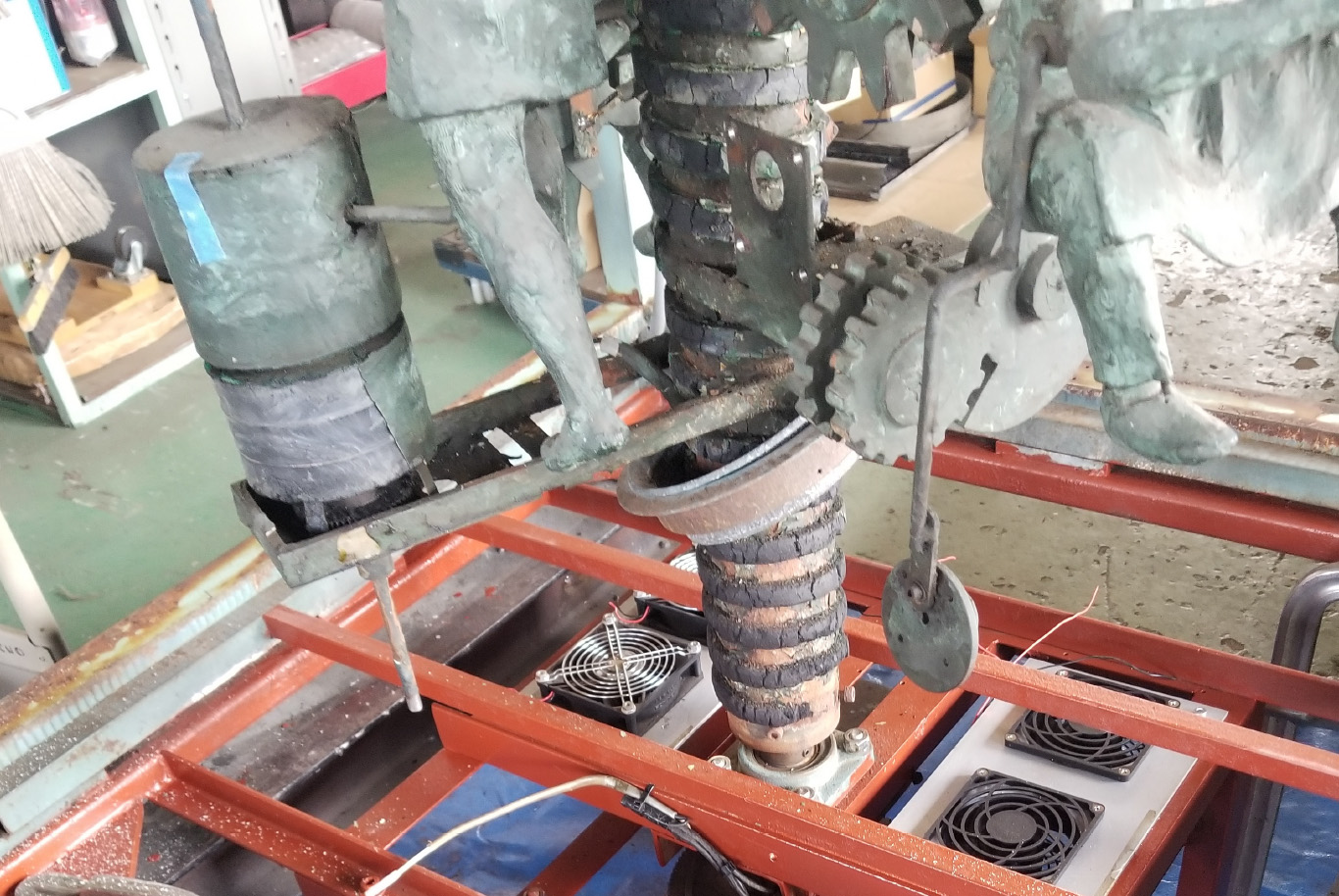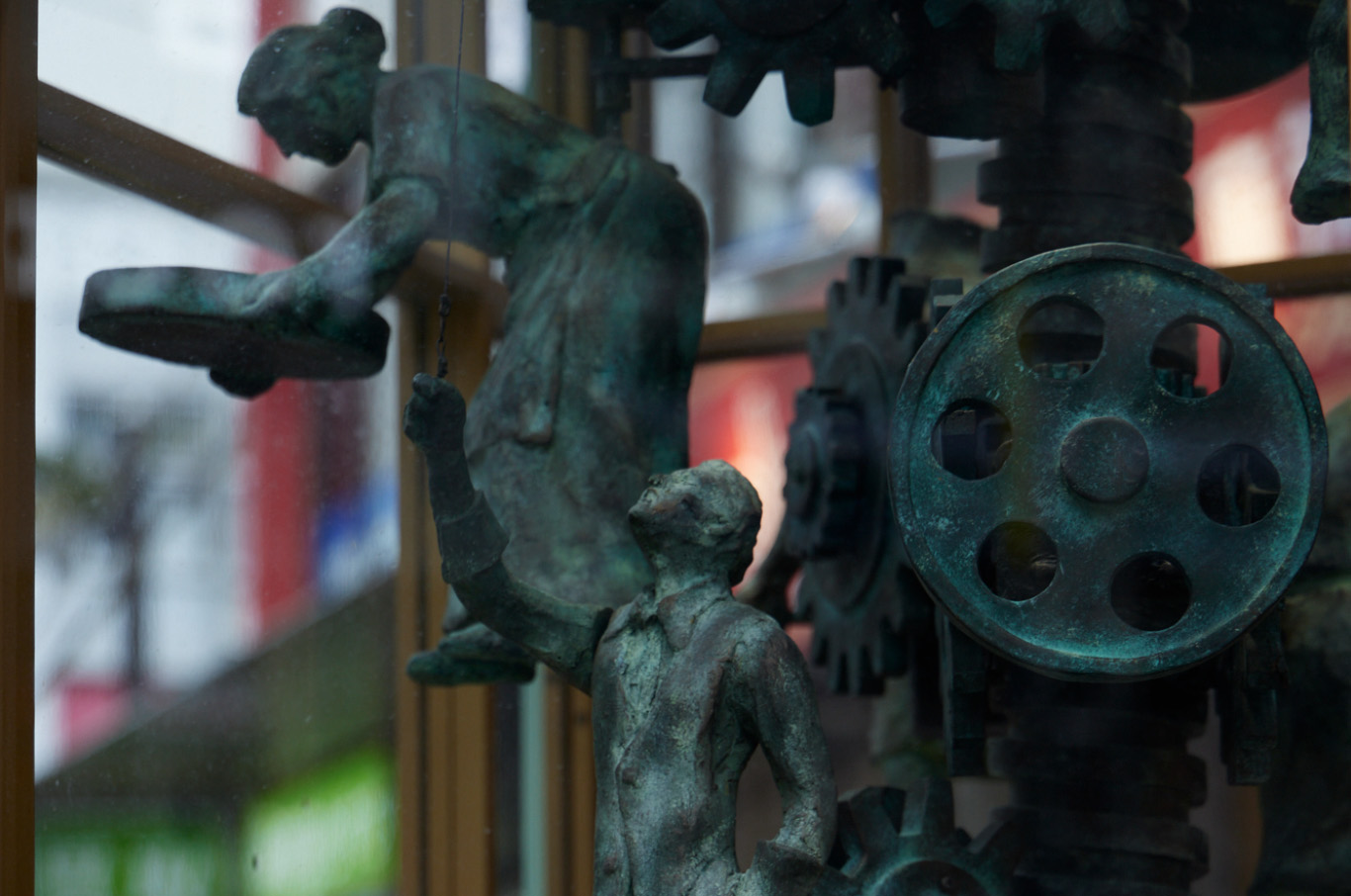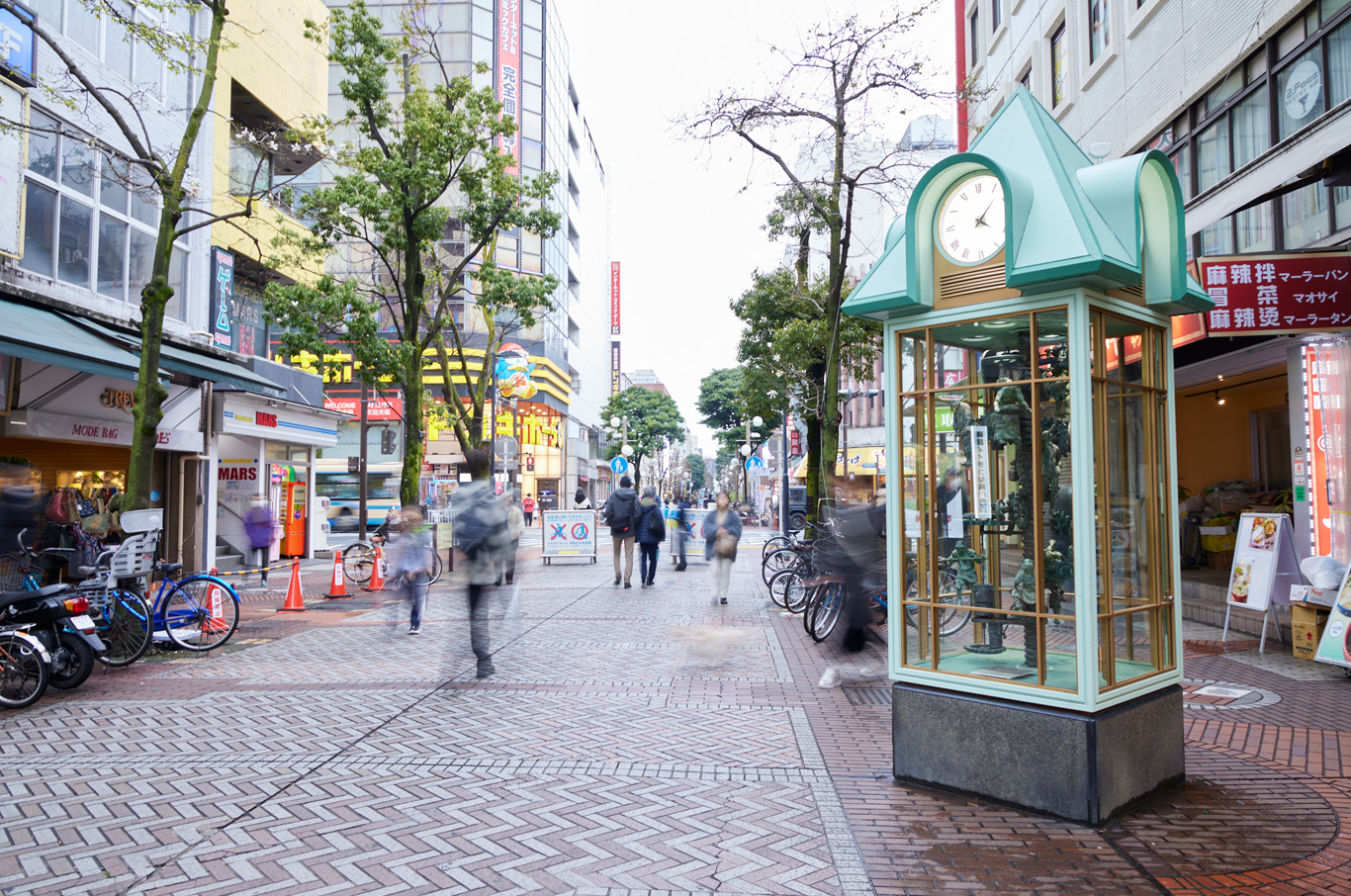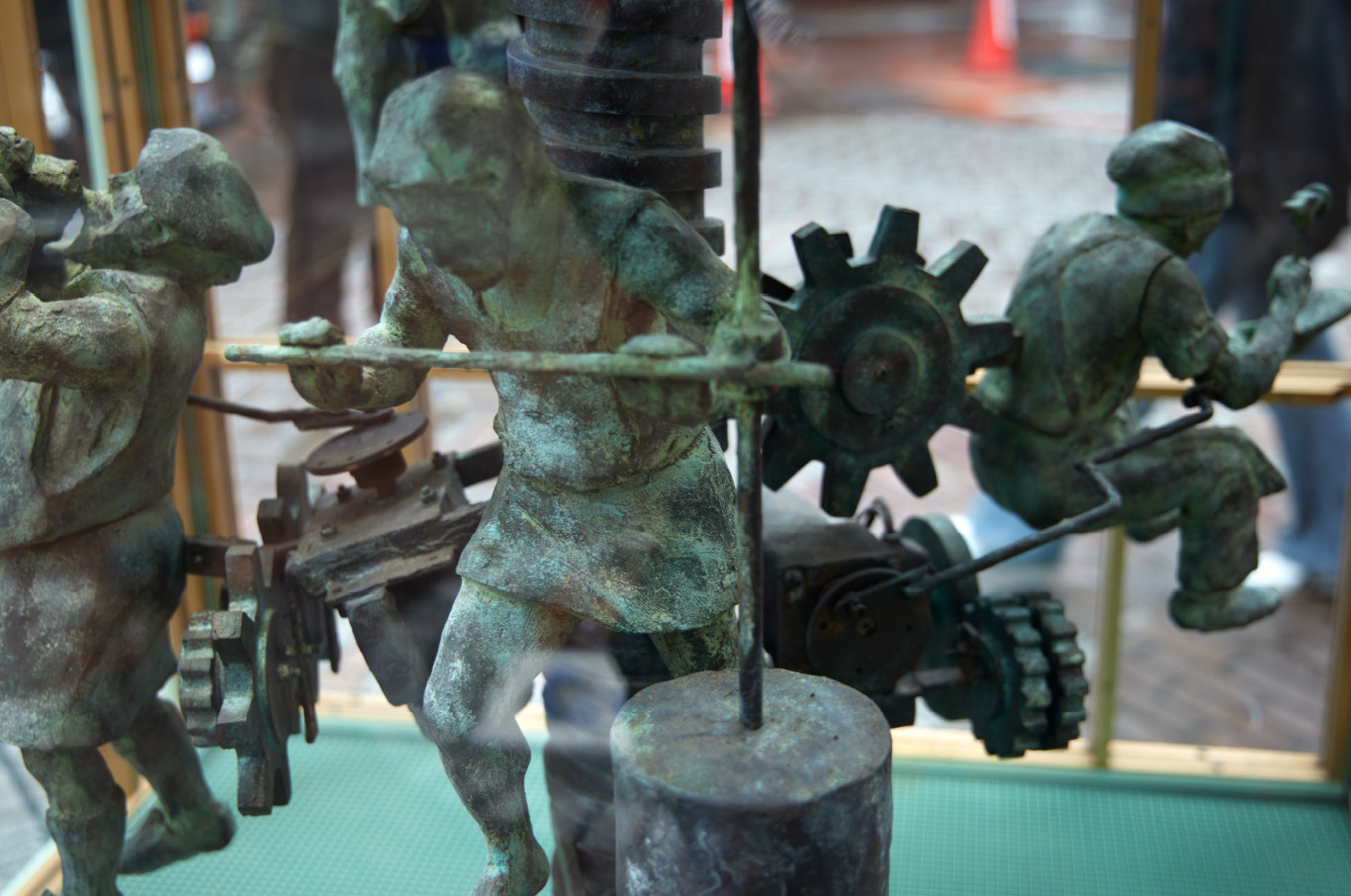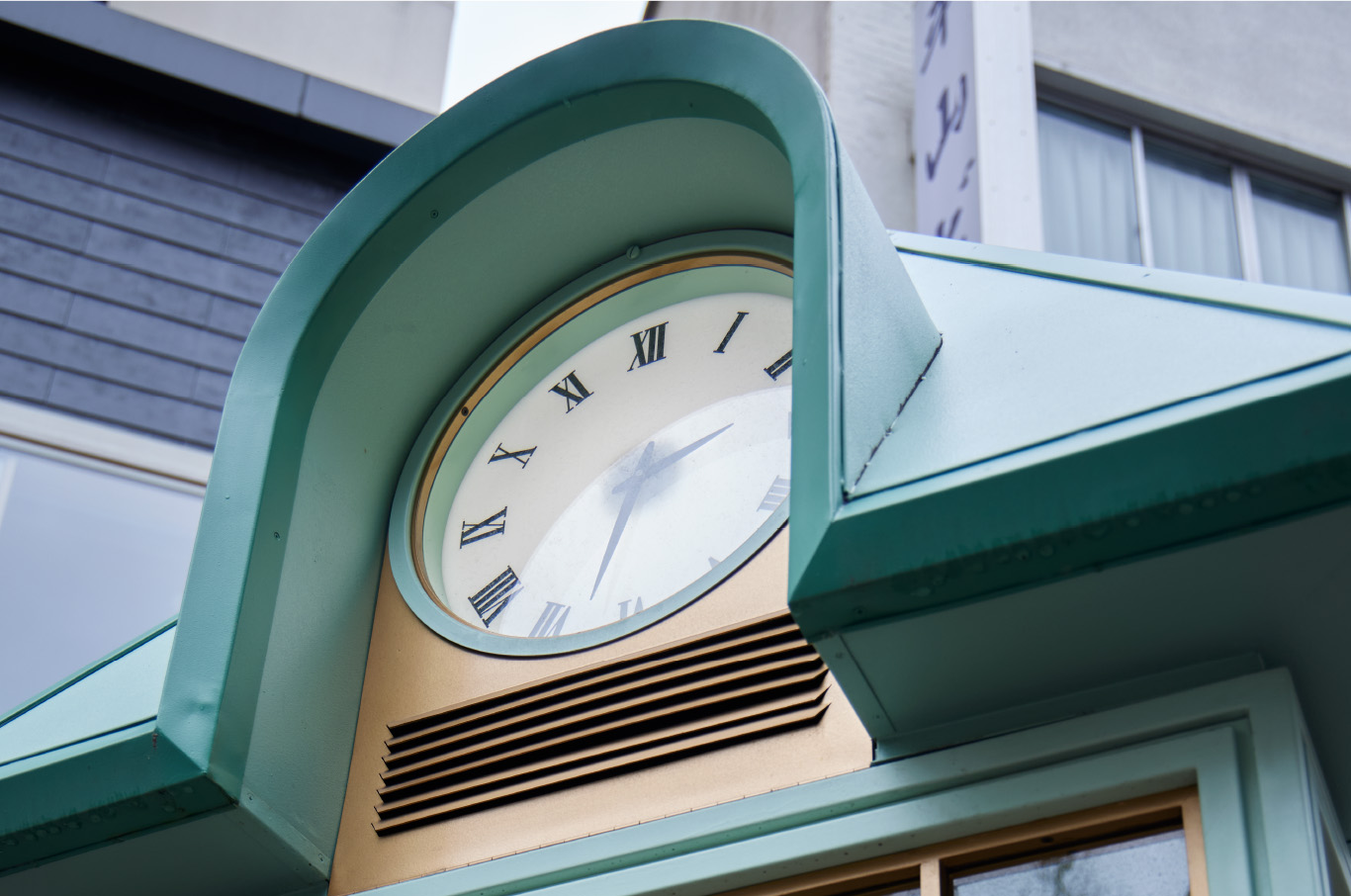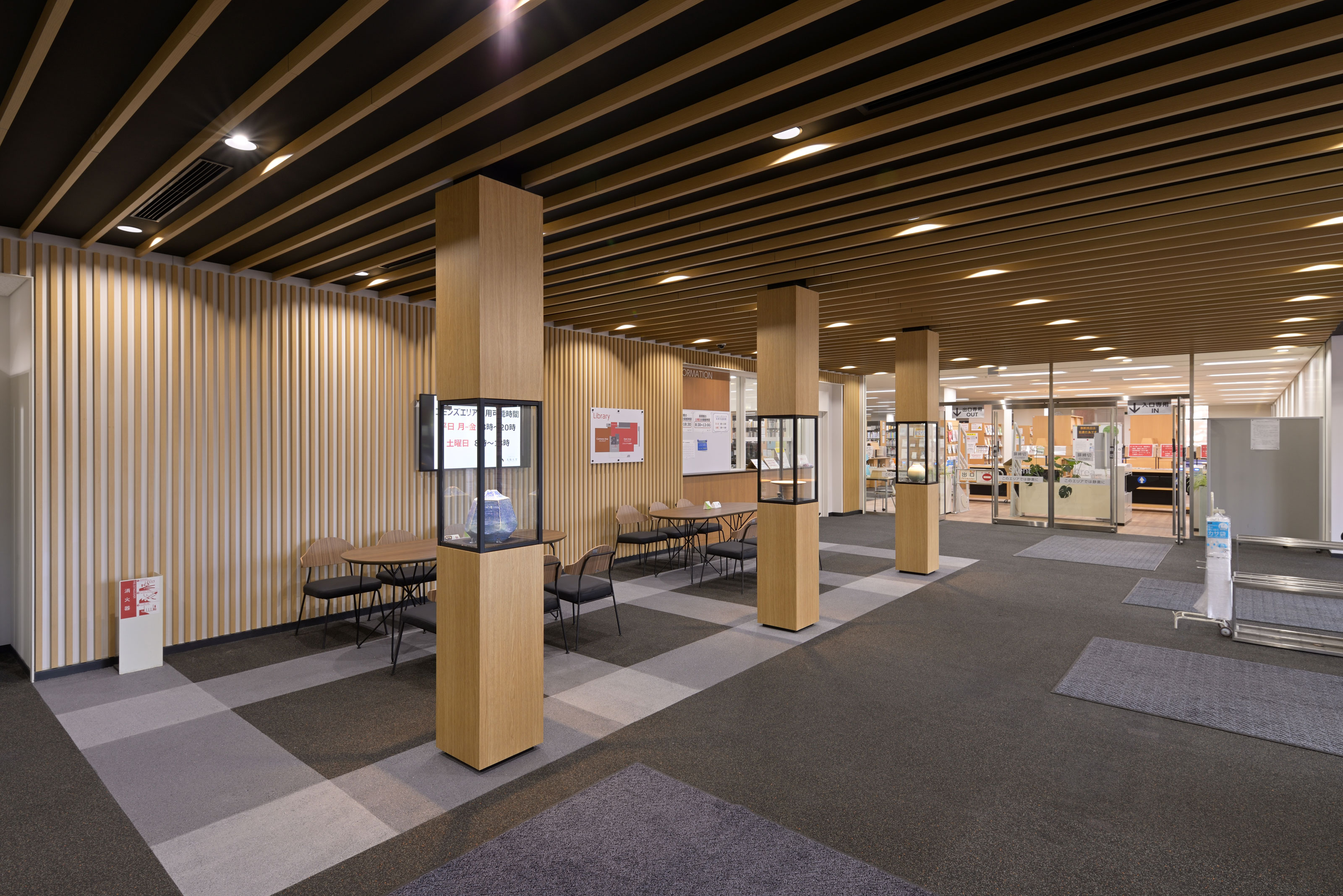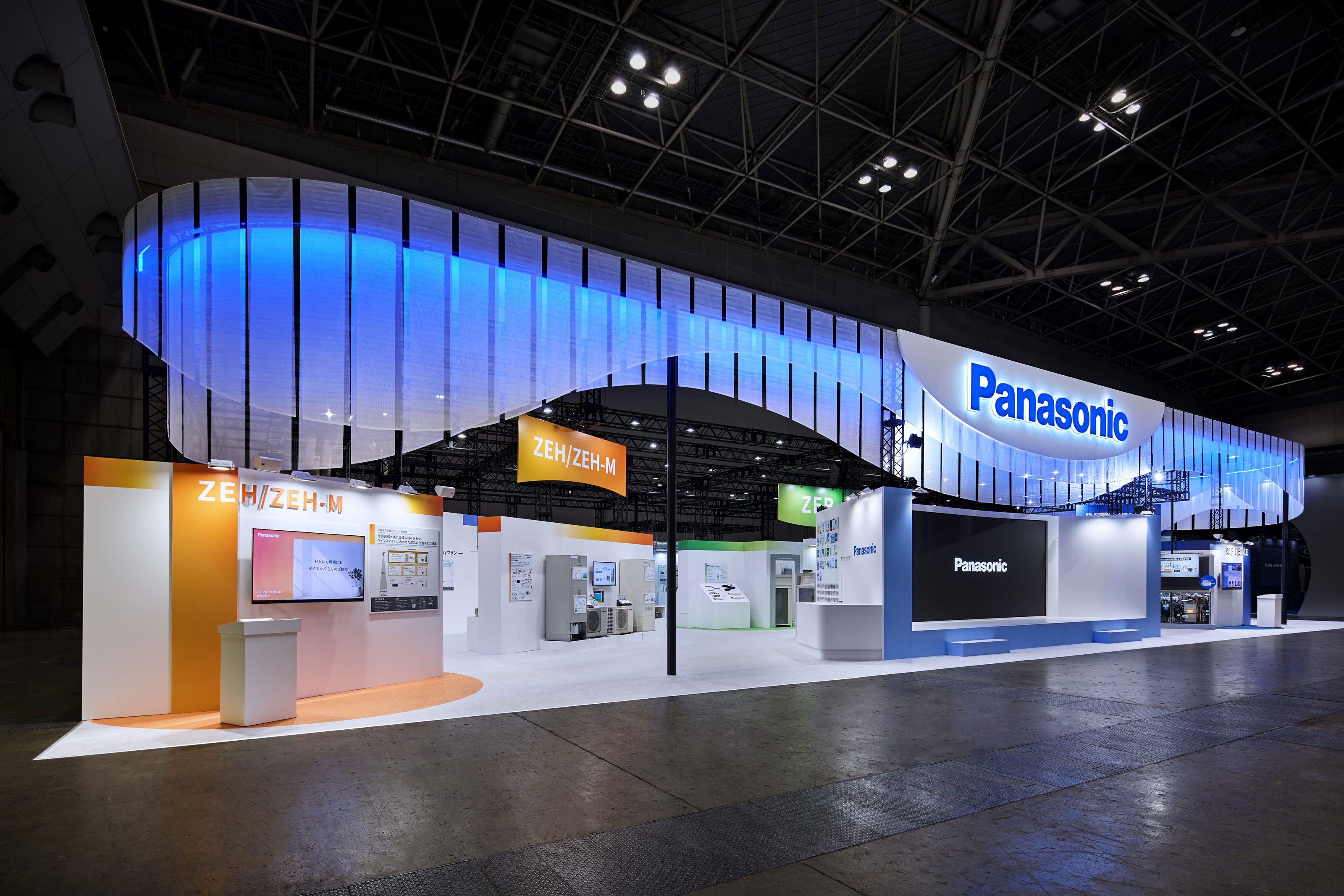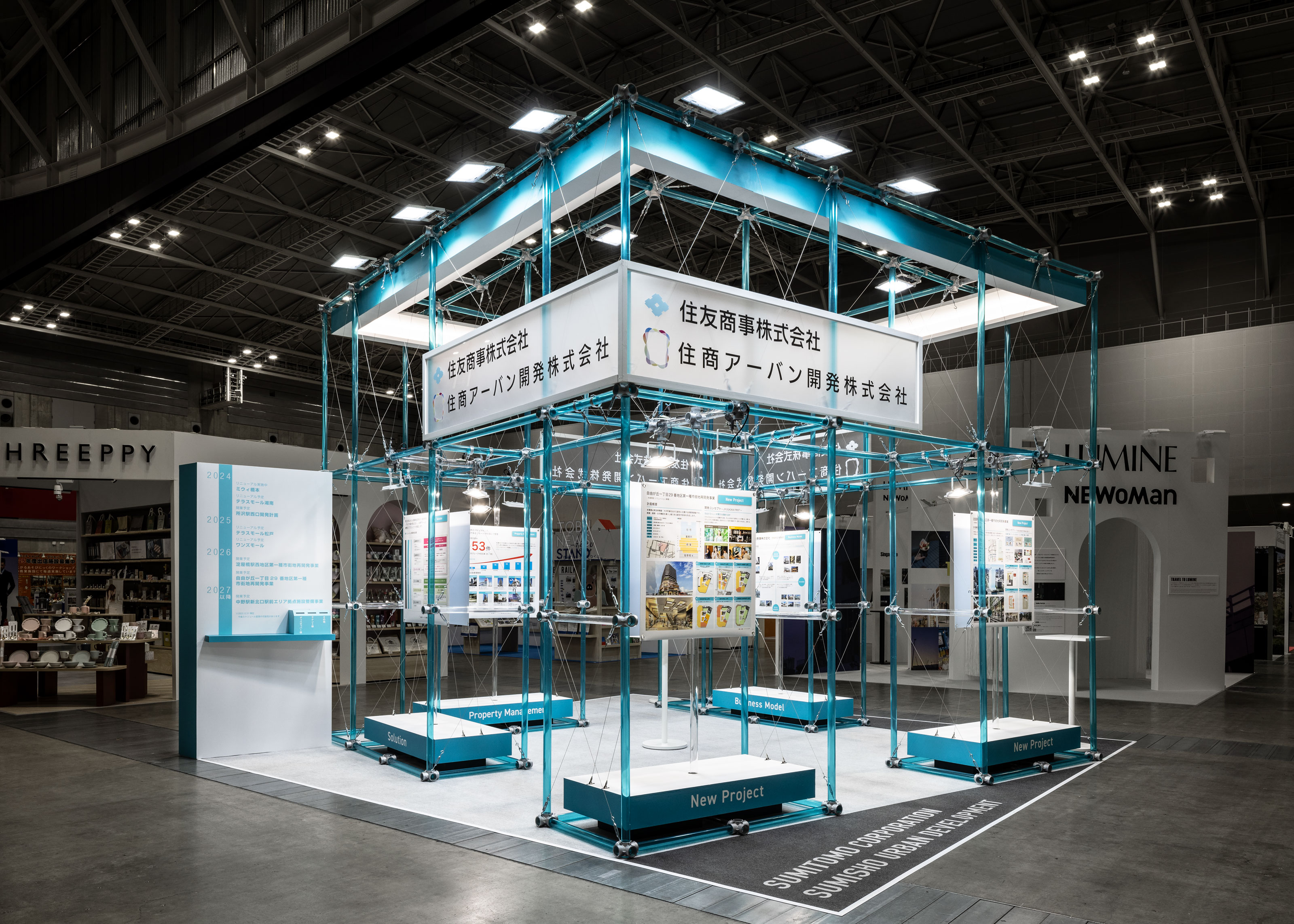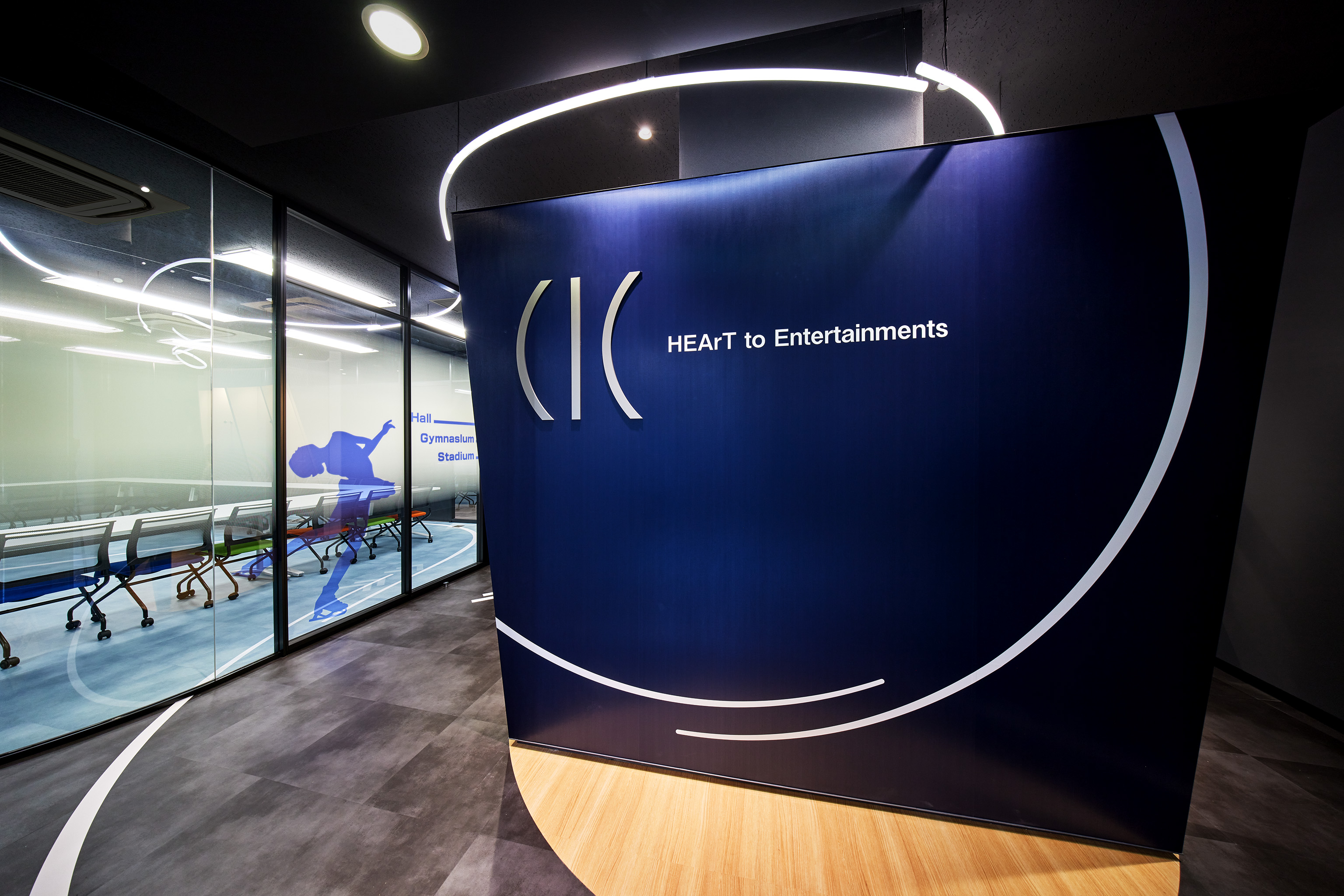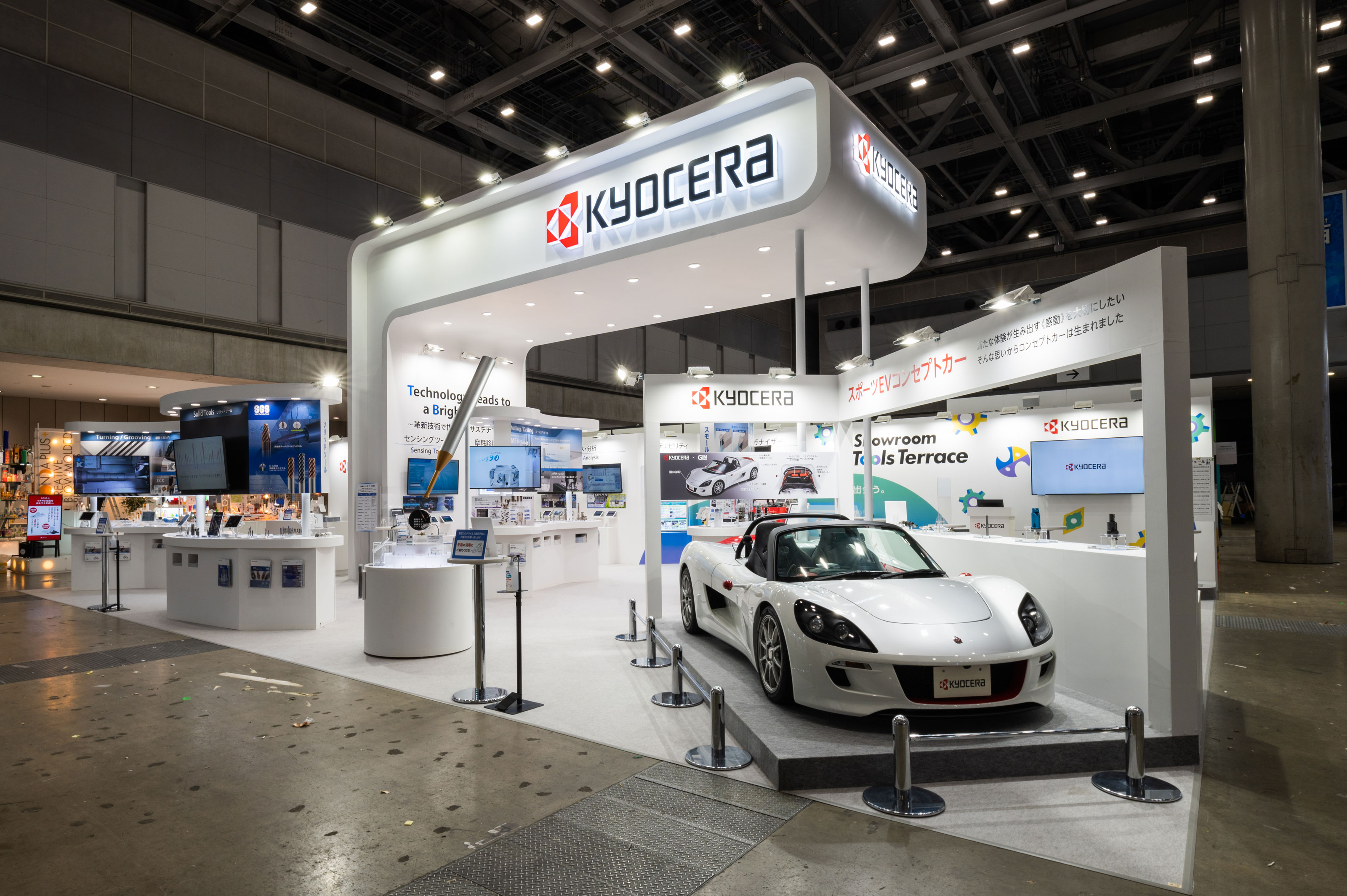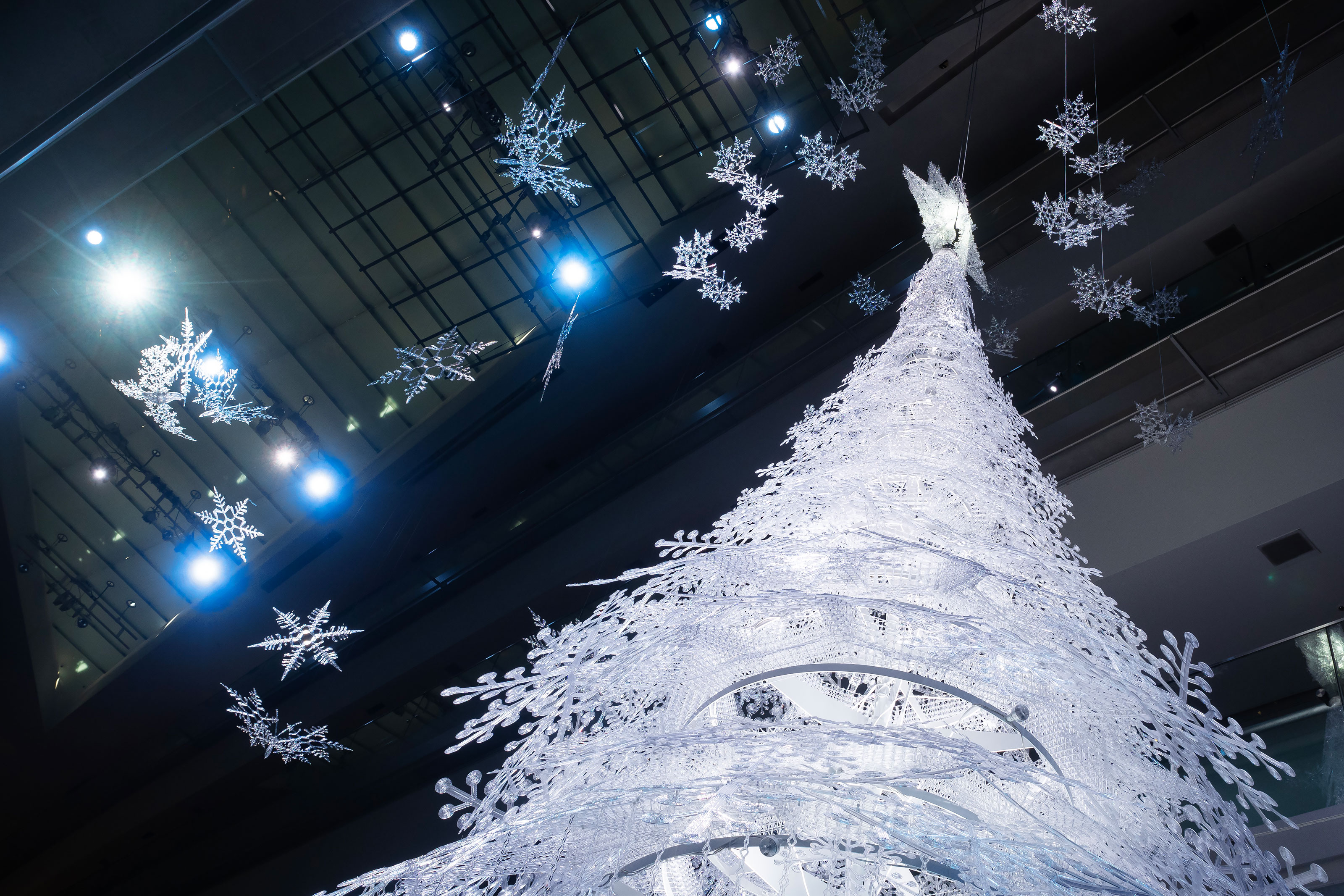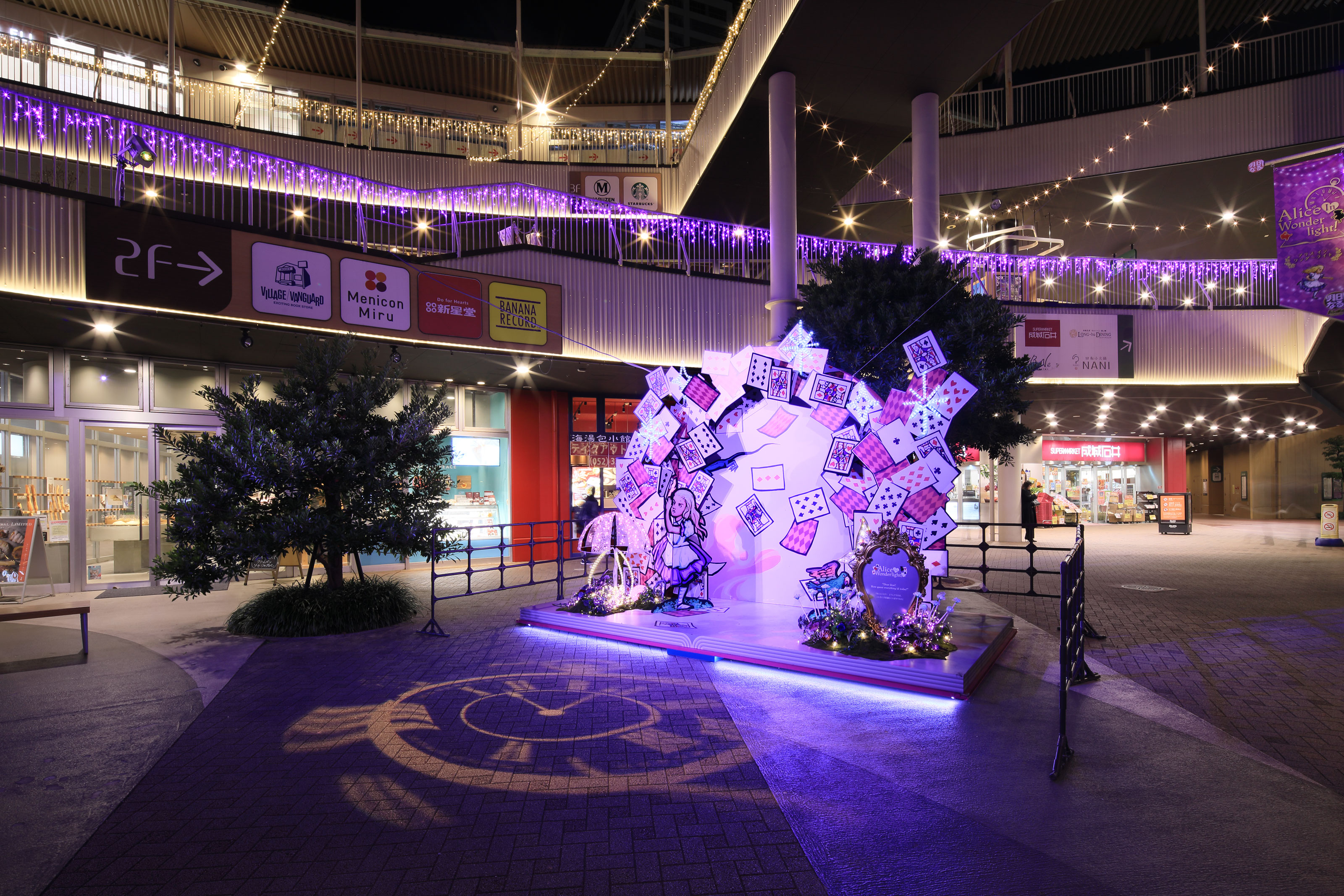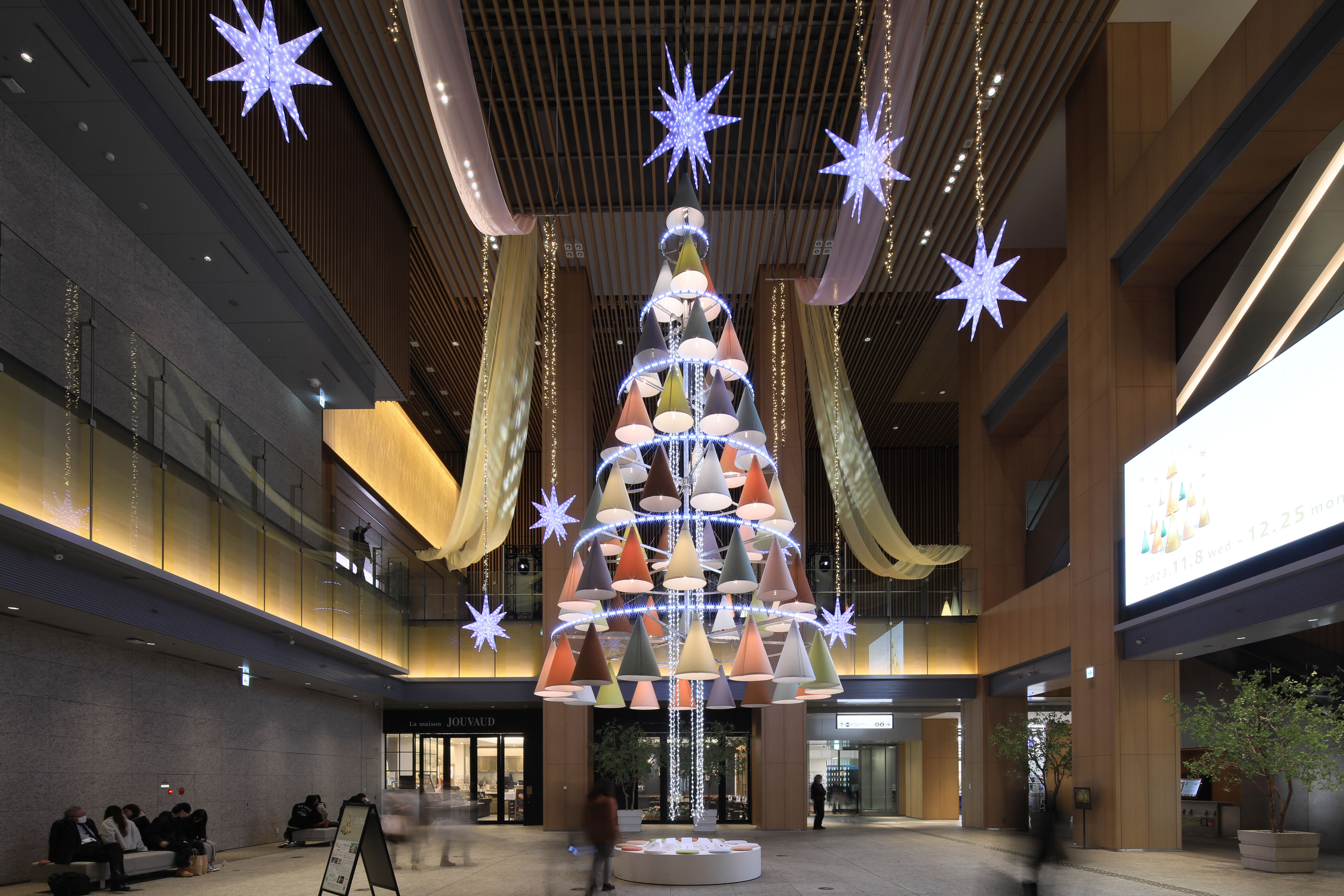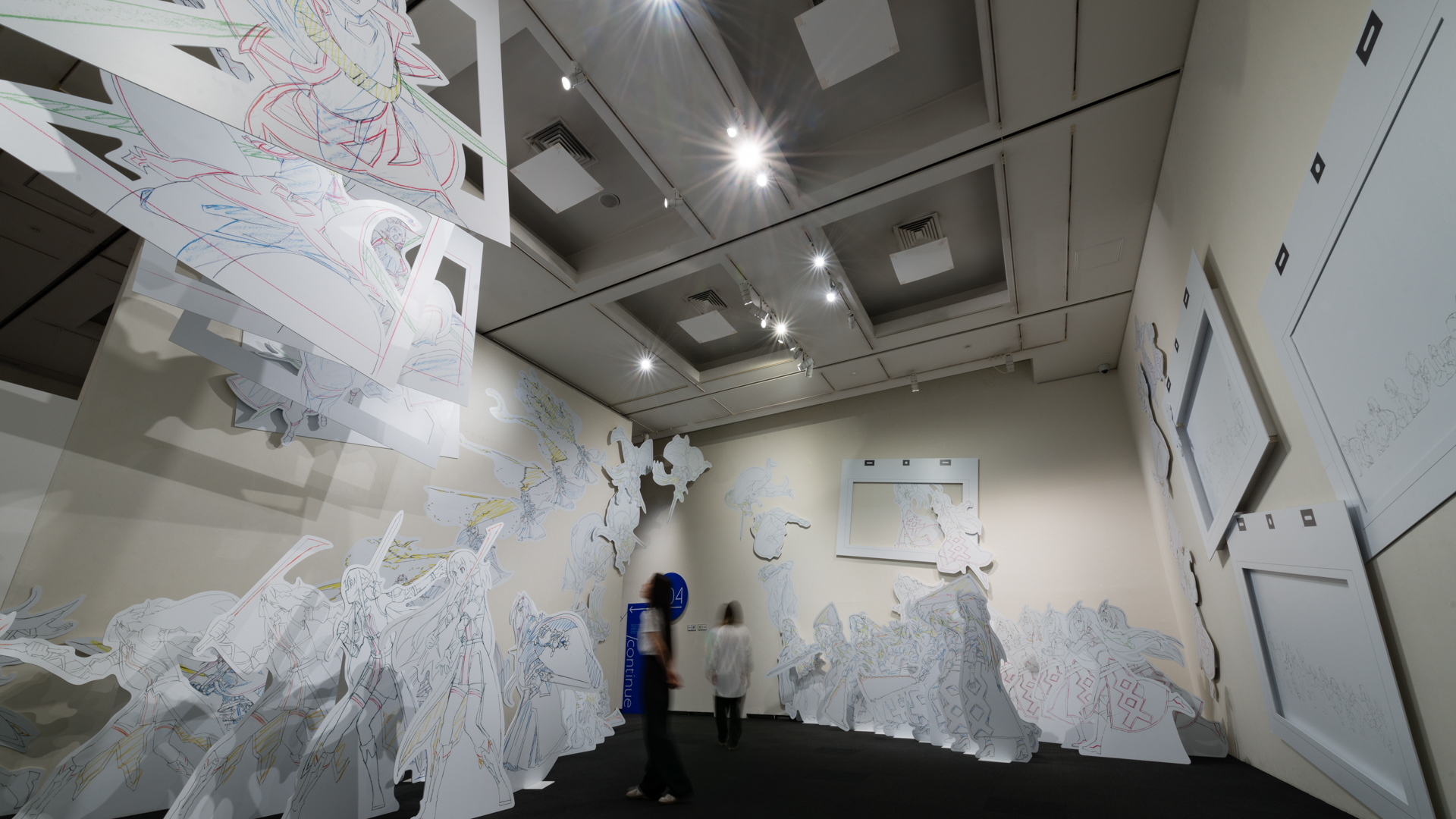WORKS
NOMURA medias meets KARAKURI CLOCK
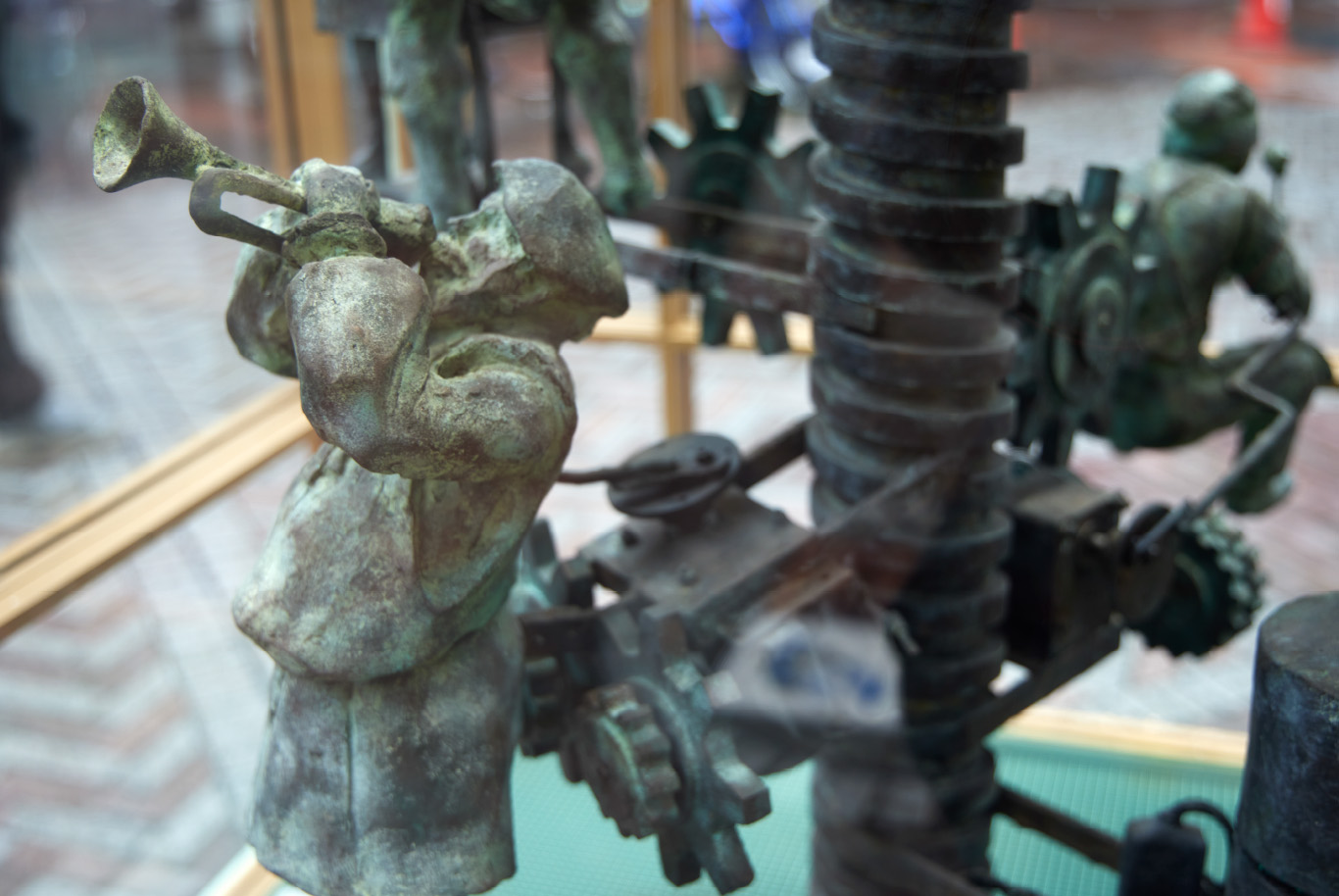
The Vibrancy of A Town and its Karakuri Clock
Revived after 16 Years:
Technology and Memories Weaved Together
by NOMURA MEDIAS
Exhibition Produce / Maintenance
2021.06-
Karakuri clocks (automaton clocks) have long been treasured in Japan. With their combined functions of mechanized puppet shows and music, they have captured the hearts of scores of people, becoming a part of their daily lives. Even as times have shifted from analog to digital, these distinctive timepieces can be seen ticking away in train stations and department stores as they watch over people passing by.
In the Isezaki Mall 1・2St. (Isezakicho 1-chome to 2-chome Shopping Street) in Naka Ward, Yokohama, Kanagawa Prefecture is a karakuri clock that has long stood as a beloved symbol of the town.
Bronze-style puppets in the shape of nine medieval European townspeople, including a priest ringing bells, a farm woman sifting, a baker baking bread, and a blacksmith hammering iron, rotate along with melancholy baroque music. It has kept time as a pioneer of karakuri clocks, which were rare in Japan at the time it was manufactured. Although it once stood silent having broken down, the Karakuri Clock began ticking again for the first time in 16 years on June 10, 2021. This event coincided with the Anniversary of Time, a revered day marking the establishment of the first clock in Japan. NOMURA MEDIAS (formerly NOMURA TECHNO) were in charge of the clock’s restoration and subsequent maintenance. We looked back with on how this timeless symbol of the town was revived with Takashi Ishida, Senior Managing Director of Isezaki Mall 1・2St.
Isezaki Mall 1・2St. used to be a shopping street with an arcade that was open to cars, but became a pedestrian-friendly open-air shopping mall during the town's redevelopment project in 1978. The Karakuri Clock was originally manufactured by NOMURA as a commemorative monument. However, it broke down around 2005 and remained that way for 16 years because there was no way to repair it. The COVID-19 pandemic marked a turning point. The mall used to hold about 250 events a year, including street performances and festivals, but the COVID-19 pandemic made it impossible to hold events, and Haruo Hiroi (chairman of the board at the time of project) suggested that the money from the events budget be used to repair the Karakuri Clock and revive the town’s vibrancy.
NOMURA, the parent company of NOMURA MEDIAS, has been manufacturing karakuri clocks for about 50 years including the ones installed at Yurakucho Mullion and Sogo Yokohama, which sparked the karakuri clock boom. NOMURA MEDIAS is also in charge of maintenance of the clocks they have manufactured. The Karakuri Clock at the Isezaki Mall 1・2St. was the first of its kind manufactured by NOMURA, so we were particularly enthusiastic about the restoration project.

Protecting karakuri clocks,
as a part of Japanese culture
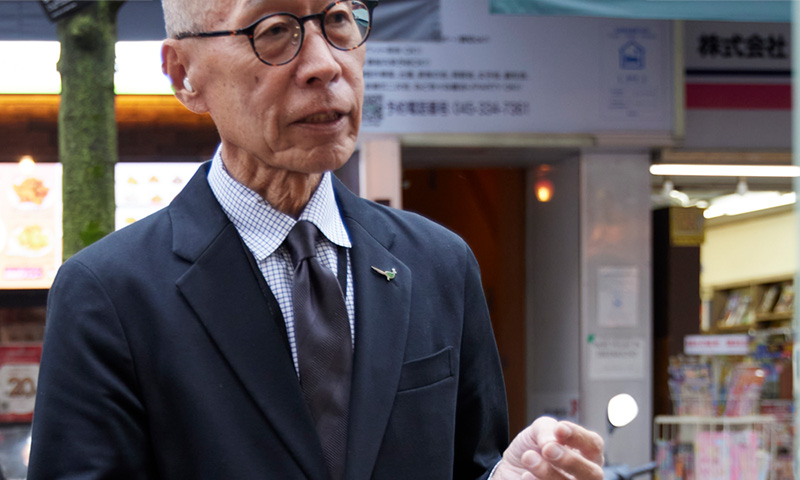
In restoring the Karakuri Clock, there was a desire to return it to its original state as much as possible. The exterior and parts that make up the form of the clock were preserved, but the color and sound presented particular challenges. “The clock was manufactured at a time before today’s digitization, so we didn’t have any blueprints we could reference. All we had to go on was some sketches from the time of manufacture. The clock had also suffered with age and had been repainted many times, so we had no way of knowing the original color. What’s more, the sound tape was also missing. The clock’s song had been composed by Yutaka Masuda, a famous local composer, but he had already passed away,” said Technical Director Keiji Kobayashi recalling the situation at the time.
The clock’s music lasts for three minutes. Ishida used to work at a department store in Isezaki Mall 1・2St. and said that he could still hum part of the melody even without the music, but it was not enough for a complete restoration.
To tackle this, Kobayashi reached out to staff at NOMURA who had already retired. In the workshop, they worked on together to recreate the original color from memory as they painted. By using every means possible, including reviewing video from a television drama that showed Isezaki Mall 1・2St. at the time that clock was still in its initial state, they were able to replicate the clock’s original color. For the sound, they were able to find a spare roll of sound tape covered in dust when they searched the offices at Isezaki Mall 1・2St. This tape was digitized to restore the sound.
“I visited the workshop when they were near completion and was surprised by the lengths everyone was going to and the enthusiasm of Mr. Kobayashi and everyone working on the project. Although we had only requested a simple restoration, everyone paid close attention to the color, shape, and minute functions. The restoration of the Karakuri Clock to its original state is thanks to the miraculous discovery of the sound tape and the enthusiasm of everyone at NOMURA MEDIAS,” said Ishida with a smile spreading across his face.
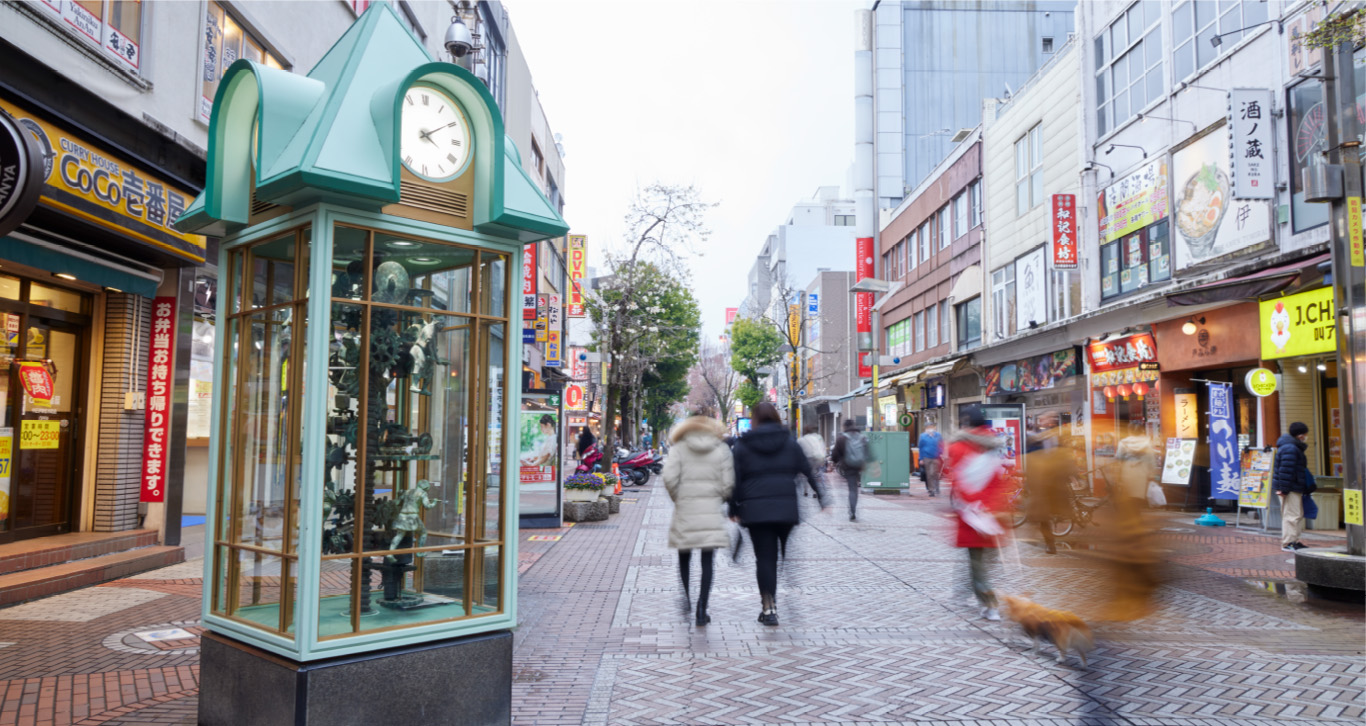
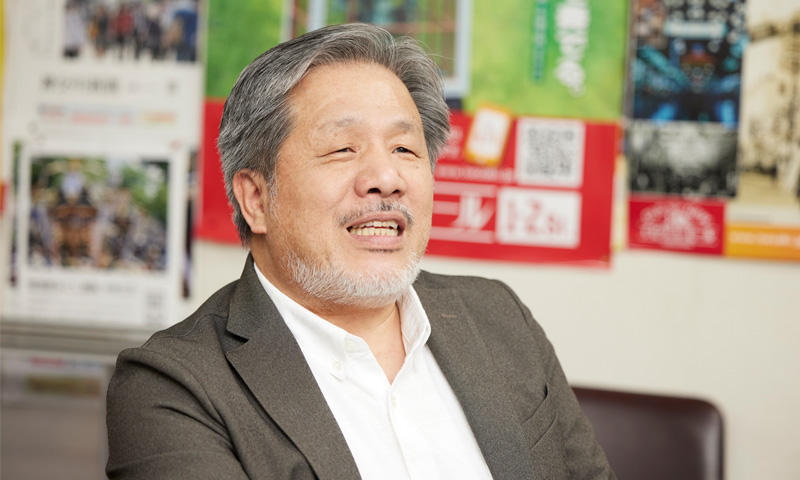

NOMURA MEDIAS maintenance,
aiming for evolution over time
The Karakuri Clock blends in with its surroundings, so when it was revealed post-restoration, it would be an exaggeration to say that it immediately drew vast, cheering crowds. However, when the music starts to play, people doing a double take, stopping, and listening to it is a common sight.
Isezaki Mall 1・2St. is also part of the route that elementary school students take to school, so there are people in their 20s who are happy to see the restored clock from their childhoods. “The sound of the Karakuri Clock is cherished by locals, and there is no doubt that it will continue to be a treasure of Isezakicho,” said Ishida.
Kobayashi recalls an experience he had with the locals of the area.
“During the restoration process, it became clear that many locals cherished the Karakuri Clock.”
He recalls opening its door as part of the pre-restoration inspection. Passersby would express their disappointment that it was finally being removed, before being overjoyed to hear that it was simply being restored.
“After we had restored the Karakuri Clock, an elderly person told me that it brought them back to bygone days as they looked at it lovingly.”
Maintenance is part of how we take into consideration the feelings the locals have towards the Karakuri Clock and restore the town’s vibrancy.
To maintain the town’s vibrancy for years to come, NOMURA MEDIAS is taking the idea of “evolution over time” seriously. For the restoration this time, it was suggested that the parts that can be seen should maintain the original aesthetic, but the parts that cannot be seen inside the clock should be replaced with new technology. Before the restoration, the Karakuri Clock was controlled by a control unit inside the office, which was connected by an underground cable. However, technological advancements at the time of restoration meant that the controller could be placed inside the monument, and the clock was transformed into a radio clock with a function to receive standard radio waves and automatically correct errors. Also, the fragile sound tape was digitized, and the sound is now played from a media player rather than a LaserDisc player. “In most cases, things are maintained for longer than the time it takes for them to be created,” said Account Producer Daisuke Kon. The restoration proposal carefully considered what would be carried on and what would be renewed so that the clock will continue to be a treasure of the town for the next 10 to 20 years. “The facility has been very generous with their budget and the effort they put into maintaining it, which allows us to perform maintenance.”
The town’s beloved Karakuri Clock will continue to live on thanks to the passion, technology and ideas of NOMURA MEDIAS, which take into account the client’s thoughts and history regarding the restored clock, then give those ideas a concrete shape.
Since its restoration in 2021, the Karakuri Clock has undergone maintenance inspections every year. “The clock plays music every 30 minutes, from 10 a.m. to 9 p.m. every day. It's amazing that three-minutes of music is played 22 times a day, yet there are no malfunctions. It makes you wonder if they are secretly performing maintenance without our knowledge,” said Ishida, who appreciates the high quality of the work.
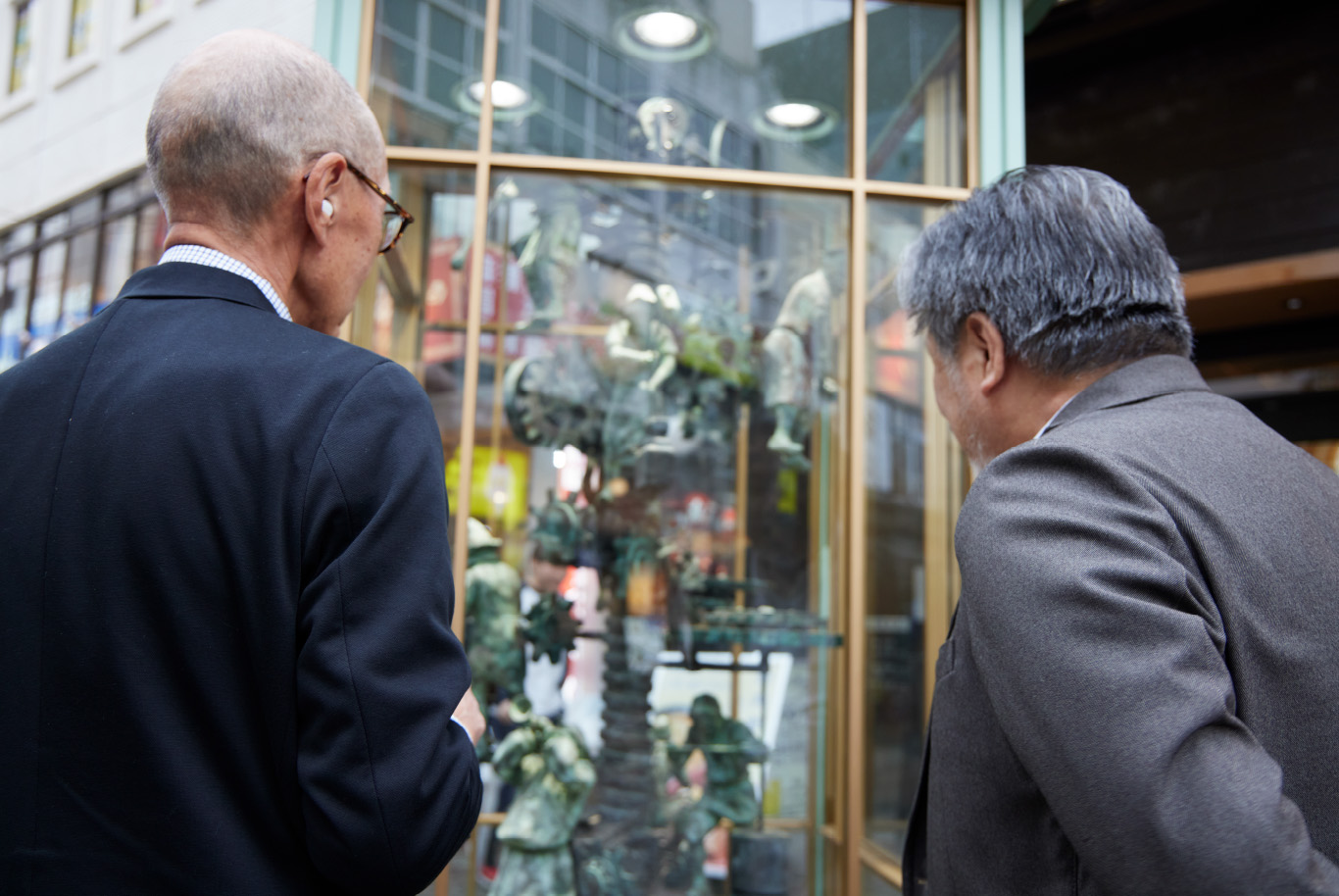
"The major difference between maintenance and new construction is whether or not the people who will actually use or see the product are in front of you,” said Kobayashi. In maintenance, there are people who are already using or seeing the product, so it is maintained while making changes to create the best form for them. The Karakuri Clock was restored and is maintained with the determination never to change anything that does not need to be changed.
In recent years, most displays have utilized digital technology, and the number of displays that use mechanical devices, including karakuri clocks, has been on the decline.
Although many karakuri clocks in the world continue to stand still, stuck in time, very few of those have actually been restored. Cost is one factor, but Kobayashi said there is another reason. “Right after we make a product, it is filled with the intentions and thoughts of the manufacturer. However, once the clock is delivered to the client and starts working, it becomes the property of the people of that area. Since the manufacturing team handles karakuri clocks from all over the country, they inevitably feel less about each clock after it is made. That is why we continue to propose maintenance based on the strong wishes of the local people who watch over and listen to the karakuri clocks.”
Ishida added, “Like the Karakuri Clock, the company may look the same on the exterior, but it will not last long unless the interior is improved. I believe Mr. Kobayashi and Mr. Kon’s enthusiasm and the corporate culture have created such a history.” His words fill us with a sense of determination.
Kobayashi said, “We were able to restore the Karakuri Clock even without drawings or color samples because of the spirit at its heart that has been passed down from generation to generation, and we were able to meet the expectations of the people at Isezaki Mall 1・2St.” We will continue to propose maintenance methods that update the technology while also taking on the thoughts of the people who created the clock and those with a connection to it.

The feelings of a watchful town
and its people joining forces
to ensure perpetuity
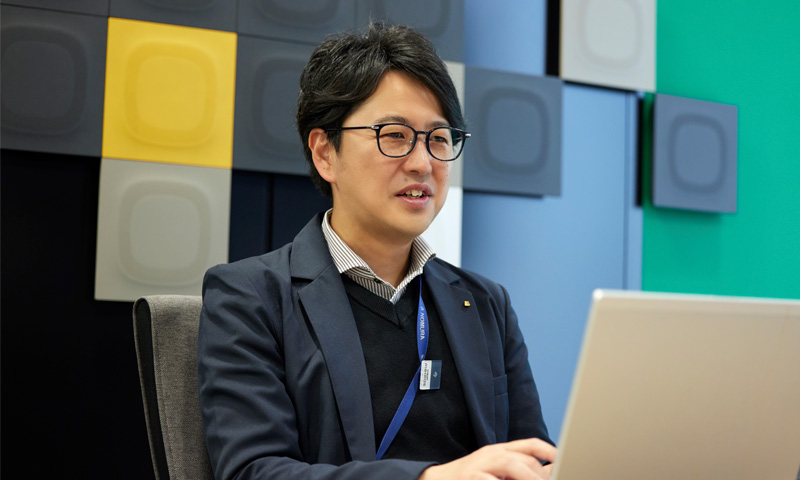
-
CREDIT
-
- Account Producer:Daisuke Kon
- Technical Director:Keiji Kobayashi
Other works
11 Solutions from NOMURA MEDIAS
-
Planning
After understanding our clients’ ideas and analyzing the issues they face, we put forward wide-ranging ideas from concept creation through to detailed plans and content proposals.
-
Design
We create spaces and content that express and embody our clients’ ideas.
-
Layout
We create technical drawings and specifications that give concrete form to how the client's ideas are expressed in the design.
-
Production and
ConstructionWith the right knowledge and judgment, we bring projects to fruition by managing production and construction with commitment to quality, safety, and the environment.
-
Product Development
We research consumer needs, then plan and develop products they are looking for while aligning with the concept and vision behind the space.
-
Sales Promotions and
Promotional itemsWe plan and create sales promotion tools and promotional items that inspire action by consumers.
-
Maintenance
To provide experiences and productions that offer safety and peace of mind, we perform regular maintenance, inspections, repairs, and equipment replacement.
-
Event Organization
To maximize the impact of events, we plan and implement everything from creating spaces to attracting customers and providing customer service support.
-
Store Operation
We create sales spaces rooted in each store’s concept and manage day-to-day operations with its worldview at the center.
-
Content Design
We plan and create original content to support our clients’ businesses.
-
System Devices
We build and install various production system devices to support the implementation of digital content.
